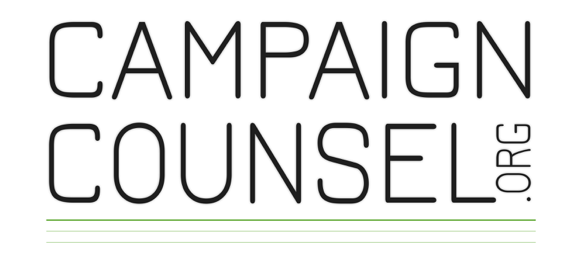3 Reasons to Include Employees in Your Capital Campaign
Your nonprofit capital campaign has multiple components, one of which should be an employee campaign. Asking employees to support the capital campaign through a well-planned strategy that is adapted to the culture and spirit of your individual organization will positively affect your company and your campaign.
Employees should be asked to support the campaign, not just because they are employees, but because of the benefits they will experience as employees and as community members. Communicate to them the internal benefits that they will experience due to the improvements to the organization. Also, outline how they as community members will benefit from the capital campaign’s advancement of the organization’s mission. In other words, speak to them as both employees and as friends in the community.
What are the 3 reasons to include an employee campaign in your capital campaign?
1. It is Morale Building
When done correctly, an employee campaign can help build morale.
Most employees of nonprofits have an interest and even passion for the mission of their organization. Being a part of an effort to advance that mission and better serve the community is inspiring.
Being a part of the advancement effort also can give employees a new positive outlook on the role they and their nonprofit employer play in the community.
2. It Benefits the Community
Don’t employees know the most about the needs of the organization? And don’t nonprofit employees know the most about the needs in their community?
If you are a large organization, like a hospital, and you can show hundreds of people supporting the campaign, even if they are employees, you will help create "campaign atmosphere" in the community. This is especially true in small communities where you may be a major employer. Showing that your employees support the campaign will help encourage others in the community to consider giving.
Remember, your employees are also living in your community. By sharing the capital campaign and the opportunity to give with your employees, you ensure that they know what is happening so they can be supportive when they talk to their friends and neighbors.
Creating this “campaign atmosphere” leads to a successful campaign and improved services to the community.
3. It Can Raise Significant Funds
Because of sheer numbers in a large organization, employee giving can raise a significant amount of money for a nonprofit capital campaign – $50,000 to $100,000 or more, if done correctly.
Laying the Groundwork
Every executive should be fully aware and committed to the campaign and should make a gift before the employee campaign begins. It's critical to start there, with a nice sum already committed. This support should encourage other employees to give generously and will make it easier for each executive to present the details of the employee campaign.
After the executives have given, the CEO should bring the managers and directors together at one time for a campaign meeting. (We will describe the meetings in the next section.) Because, as a general rule, these managers and directors represent the higher paid employees it would be anticipated that their gifts would provide an impressive kick-off to the employee campaign.
During the meeting, each manager will be asked for one thing and instructed to do a second.
Each will be asked to make a gift in the form of a check, payroll deduction or regular pledge. Ideally, you would like them to do a multiple-year payroll deduction gift to create momentum in the campaign. The critical thing is to stress the timing; the decision must be made quickly.
In addition to asking for a personal gift, each manager and director should be instructed to arrange one or two meetings that all of their “direct-report” staff can attend. It is critical that the CEO places the responsibility for getting all staff to a departmental meeting in the hands of the manager or director of that department. Each department should gather individually, which should enhance the effectiveness of the meetings.
Included in getting the meeting together, it is important that directors or managers know that they are responsible for securing a decision from each employee – not a gift, just a decision. In other words, the leader’s job is to get the employee to return a gift intention form, whether they make a gift or not. Generally, the manager or director emphasizes this in the meeting, and through regular communication.
Providing incentives for returning a gift intention form, regardless of if the employee is making a gift or not, will encourage participation in the campaign. The cost of logo T-Shirts or even two airline tickets (raffled) will pale in comparison to the results of the campaign if you get 100% of your employees to return a form.
It is a lot of meetings, but it is also the most effective way to share the details of the project with the employees, build morale and let them feel a part of the campaign so that they can share their excitement with the community.
Depending on the number of employees, the total employee campaign should take two to eight weeks, with all gift intention forms turned in during that time.
Planning the Meeting
The meetings with directors, managers and employees are informal. They are designed to share the details of the project and campaign and motivate employees to give. Just as you would never recommend trying to "force" someone in the community to give, it is strongly urged that you remember that, even with employees, you are asking for a gift and not expecting anything. In fact, it can be set up so that no one but the fundraising consultant and the payroll department know what, if anything, any employee gives.
In the meeting, there will be brief opening comments, then show the campaign video and explain the project. Answer questions and encourage everyone to support the campaign.
The key is to give each employee an envelope (containing the brochure and gift intention form) and explain its contents. Take it out of the envelope and show the employee the brochure, gift form and return envelope. It may feel awkward, but it's important to show the contents and explain each document. Show the gift intention form, and how to fill it out (a per pay period amount and when the gift will start being subtracted). Encourage each to fill it out and return it at the meeting, but also make sure the employee knows the deadline for returning the form if not returned at the meeting.
Explain that the manager will keep track of who has made a decision (not a gift), and each employee is expected to return a form, whether a gift is given or not. Stress that their decision is confidential; that is why the form must be returned regardless of a commitment.
Does this work? It works remarkably well. We find that 30% to 40% of the employees will make a gift. The total raised will vary with the number of employees in the organization. For example, a nonprofit with a total of 800 employees might expect as much as $250,000 over five years.
More important, we'll find that employees react positively to the approach since it does not focus on trying to force employees into giving. We are just asking them to consider a gift and rewarding them for making the decision.
Use the raffle, the T-Shirt and the special employee event to encourage returning the pledge form. You really don't even have to emphasize the idea of "giving,” just focus on returning a signed form, whether they give or not. It's softer and you'll get better results.
Have No Expectations in an Employee Campaign
In an employee campaign, there is no expectation. In fact, you should provide no guidance to employees on their level of giving. You don't know the capability of each employee.
If asked, “How much should we give?”, answer, “Just do the best you can.” In the end, you'll raise more money. Providing guidance can create a ceiling – those who can give more will only give what was asked. Those that can't give that aren't going to no matter where you set the level.
Also, by saying, "Do your best and we'll be happy,” you have a better chance of keeping employees happy. You should be grateful for every gift, in part, because you are playing a numbers game here: the sheer number of employees will ensure a successful employee campaign.
We are happy to share more about capital campaigns with you. Contact us to set up a call or learn more on our free resources page.
Melissa Sais is a consultant and communications director with CampaignCounsel.org.







